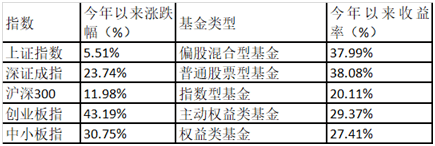MybatisеҺҹзҗҶmybatisжәҗз ҒеҺҹзҗҶдё»иҰҒжҳҜеҲҶдёәдёүдёӘйғЁеҲҶ еҲқе§ӢеҢ–гҖҒеҲӣе»әдјҡиҜқгҖҒиҜӯеҸҘжү§иЎҢ
дёҖгҖҒеҲқе§ӢеҢ–1.иҜ»еҸ–й…ҚзҪ®ж–Ү件mybatis-config.xml гҖӮ
2.и§ЈжһҗmApper.xmlж–Ү件 гҖӮ
3.жңҖеҗҺе°Ҷmapper.xmlдёӯзҡ„sqlиҜӯеҸҘе…ЁйғЁдҝқеӯҳеҲ°дәҶMap mappedStatementsдёӯпјҲmappedStatementsзҡ„key:namespace+sqlId,value:MappedStatement
mappedStatementsиҝҳдјҡдҝқеӯҳnamespaceе’Ңд»ЈзҗҶе·ҘеҺӮзҡ„жҳ е°„е…ізі» пјҢ еӯҳе…ҘеҲ°knownMappers.put(type, newMapperProxyFactory<>(type));пјү гҖӮ
жәҗз Ғе®һзҺ°public void prepare() throws IOException {//еҠ иҪҪmybatis-config.xmlй…ҚзҪ®ж–Ү件String resource = "mybatis-config.xml";//е°Ҷmybatisй…ҚзҪ®ж–Ү件иҪ¬жҚўжҲҗжөҒзҡ„еҪўејҸInputStream inputStream = Resources.getResourceAsStream(resource);//newдёҖдёӘSqlSessionFactoryBuilder пјҢ 然еҗҺе°ҶжөҒдј иҝӣеҺ» пјҢ жҳҜдёәдәҶеҫ—еҲ°дёҖдёӘ sqlSessionFactory//иҝҷйҮҢдҪҝз”ЁеҲ°дәҶе»әйҖ иҖ…жЁЎејҸSqlSessionFactory sqlSessionFactory = new SqlSessionFactoryBuilder().build(inputStream);}жҲ‘们йҖҡиҝҮдёҠйқўзҡ„buildејҖе§Ӣйҳ…иҜ»жҲ‘们mybatisзҡ„жәҗз Ғ
public SqlSessionFactory build(InputStream inputStream, String environment, Properties properties) {try {// ејҖе§Ӣи§Јжһҗ mybatis-config.xml пјҢ 并且еҲӣе»әдәҶ Configuration еҜ№иұЎ//Configuration еҜ№иұЎжҳҜеҜ№еә”mybatis-config.xmlдёӯзҡ„дёҖдәӣй…ҚзҪ®зҡ„XMLConfigBuilder parser = new XMLConfigBuilder(inputStream, environment, properties);// и§ЈжһҗXML пјҢ жңҖз»Ҳиҝ”еӣһдёҖдёӘ DefaultSqlSessionFactory >>return build(parser.parse());} catch (Exception e) {throw ExceptionFactory.wrapException("Error building SqlSession.", e);} finally {ErrorContext.instance().reset();try {inputStream.close();} catch (IOException e) {// Intentionally ignore. Prefer previous error.}}}и§Јжһҗmybatis-config.xml д»Һ configuration ејҖе§Ӣи§Јжһҗ пјҢ д№ҹе°ұжҳҜжҲ‘们xmlдёӯзҡ„жңҖдёҠеұӮй…ҚзҪ®ејҖе§Ӣи§Јжһҗ
public Configuration parse() {if (parsed) {throw new BuilderException("Each XMLConfigBuilder can only be used once.");}parsed = true;parseConfiguration(parser.evalNode("/configuration"));return configuration;}жҳҜдёҖеұӮдёҖеұӮеҜ№mybatis-config.xmlиҝӣиЎҢи§Јжһҗ пјҢ 并е°ҶжүҖжңүзҡ„ж ҮзӯҫйғҪж”ҫеҲ°дәҶConfigurationдёӯ пјҢ жҲ‘们еҸҜд»ҘзңӢеҲ°дёҖдёӢд»Јз Ғдёӯзҡ„еҸӮж•°
private void parseConfiguration(XNode root) {try {// еҜ№дәҺе…ЁеұҖй…ҚзҪ®ж–Ү件еҗ„з§Қж Үзӯҫзҡ„и§Јжһҗ,е°Ҷж Үзӯҫж”ҫеҲ°ConfigurationдёӯpropertiesElement(root.evalNode("properties"));// и§Јжһҗ settings ж ҮзӯҫProperties settings = settingsAsProperties(root.evalNode("settings"));loadCustomVfs(settings);loadCustomLogImpl(settings);// зұ»еһӢеҲ«еҗҚtypeAliasesElement(root.evalNode("typeAliases"));// жҸ’件pluginElement(root.evalNode("plugins"));// з”ЁдәҺеҲӣе»әеҜ№иұЎobjectFactoryElement(root.evalNode("objectFactory"));// з”ЁдәҺеҜ№еҜ№иұЎиҝӣиЎҢеҠ е·ҘobjectWrapperFactoryElement(root.evalNode("objectWrapperFactory"));// еҸҚе°„е·Ҙе…·з®ұreflectorFactoryElement(root.evalNode("reflectorFactory"));// settings еӯҗж ҮзӯҫиөӢеҖј пјҢ й»ҳи®ӨеҖје°ұжҳҜеңЁиҝҷйҮҢжҸҗдҫӣзҡ„ >>settingsElement(settings);// еҲӣе»әж•°жҚ®жәҗenvironmentsElement(root.evalNode("environments"));databaseIdProviderElement(root.evalNode("databaseIdProvider"));typeHandlerElement(root.evalNode("typeHandlers"));// и§Јжһҗеј•з”Ёзҡ„Mapperжҳ е°„еҷЁ иҝҷдёӘжҳҜжңҖйҮҚиҰҒзҡ„ж“ҚдҪңmapperElement(root.evalNode("mappers"));} catch (Exception e) {throw new BuilderException("Error parsing SQL Mapper Configuration. Cause: " + e, e);}}жҲ‘们жқҘзңӢдёҖдёӢжңҖйҮҚиҰҒзҡ„ж–№жі•йғҪеҒҡдәҶе“Әдәӣж“ҚдҪң
private void mapperElement(XNode parent) throws Exception {if (parent != null) {for (XNode child : parent.getChildren()) {// дёҚеҗҢзҡ„е®ҡд№үж–№ејҸзҡ„жү«жҸҸ пјҢ жңҖз»ҲйғҪжҳҜи°ғз”Ё addMapper()ж–№жі•пјҲж·»еҠ еҲ° MapperRegistryпјү гҖӮиҝҷдёӘж–№жі•е’Ң getMapper() еҜ№еә”// <package name="com.xinyu.demo"/>еҢ…еҗ«иҝҷж ·зҡ„ж ҮзӯҫжүҚдјҡиө°ifж“ҚдҪң//else иө°зҡ„жҳҜ <mapper resource="BlogMapper.xml"/>иҝҷж ·зҡ„ж Үзӯҫif ("package".equals(child.getName())) {String mapperPackage = child.getStringAttribute("name");configuration.addMappers(mapperPackage);} else {String resource = child.getStringAttribute("resource");String url = child.getStringAttribute("url");String mapperClass = child.getStringAttribute("class");if (resource != null && url == null && mapperClass == null) {// resourceзӣёеҜ№и·Ҝеҫ„ErrorContext.instance().resource(resource);InputStream inputStream = Resources.getResourceAsStream(resource);XMLMapperBuilder mapperParser = new XMLMapperBuilder(inputStream, configuration, resource, configuration.getSqlFragments());// и§Јжһҗ Mapper.xml пјҢ иҜҰжғ…зңӢдёӢж–№д»Јз Ғеқ—mapperParser.parse();} else if (resource == null && url != null && mapperClass == null) {// url з»қеҜ№и·Ҝеҫ„ErrorContext.instance().resource(url);InputStream inputStream = Resources.getUrlAsStream(url);XMLMapperBuilder mapperParser = new XMLMapperBuilder(inputStream, configuration, url, configuration.getSqlFragments());mapperParser.parse();} else if (resource == null && url == null && mapperClass != null) {// classеҚ•дёӘжҺҘеҸЈClass<?> mapperInterface = Resources.classForName(mapperClass);configuration.addMapper(mapperInterface);} else {throw new BuilderException("A mapper element may only specify a url, resource or class, but not more than one.");}}}}}
жҺЁиҚҗйҳ…иҜ»
- ж №жҚ®дәӨжҚўжңәзҡ„е·ҘдҪңеҺҹзҗҶеҸҜзҹҘпјҢдәӨжҚўжңәеҸҜд»ҘеӨҡдёӘз«ҜеҸЈеҜ№д№Ӣй—ҙзҡ„ж•°жҚ®дј иҫ“
- и·Ҝз”ұдәӨжҚўжҠҖжңҜвҖ”VLANеҺҹзҗҶеҸҠй…ҚзҪ®
- Linuxе®№еҷЁжҠҖжңҜеҺҹзҗҶе’ҢдҪҝз”Ё
- дёҖж–ҮдәҶи§ЈзҘһз»ҸзҪ‘з»ңе·ҘдҪңеҺҹзҗҶ
- жҗңзҙўеј•ж“ҺжҠ“еҸ–дҝЎжҒҜзҡ„еҺҹзҗҶ
- SQLжіЁе…Ҙж”»еҮ»зҡ„еҺҹзҗҶ
- RedisиҜҰи§ЈпјҡеҺҹзҗҶе’ҢжңәеҲ¶
- Spring BootеҗҜеҠЁеҺҹзҗҶи§Јжһҗ
- C++ дёҖзҜҮжҗһжҮӮеӨҡжҖҒзҡ„е®һзҺ°еҺҹзҗҶ
- иҚ§е…үзҒҜеҰӮдҪ•йҖүиҙӯ иҚ§е…үзҒҜе·ҘдҪңеҺҹзҗҶ

















